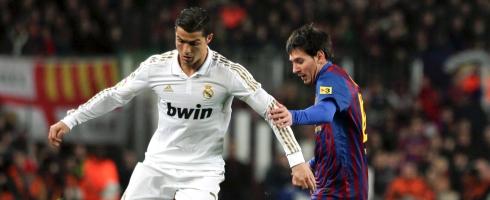This is a battle between Spain’s two biggest cities. Castilla against Catalonia. Nation against state. Centralism against regionalism. White against Red and Blue. It is Messi, Suarez and Neymar against Bale, Benzema and Ronaldo. It is the sport’s two biggest-spending clubs going head-to-head. It’s spell-binding, controversial, gripping and often ugly. It is El Clasico.
These eternal rivals play out perhaps the most politically-charged football fixture on the planet, and certainly that with the highest profile. The two have diametrically-opposed viewpoints. Different politics. Different languages. Different identities.
Spain is a nation more fractured and splintered than any other major Western nation, with tangible differences in regional pride, dialects and symbolism. This fixture encapsulates all this and much more, shaped by a traumatic Civil War and deep senses of injustice, foul play and misrepresentation.
This is a fixture which has baggage, at times too much. A pig’s head was thrown in the direction of Luis Figo – the Portuguese winger who once embodied the values of the Catalans – from the stands of the Camp Nou, upon his return to the 105,000-capacity stadium in the white of Real Madrid, months after a then-world record, earth-shattering transfer. Figo became the 10th player to represent both clubs, although four more followed in the next seven years – Albert Celades, Ronaldo, Samuel Eto’o and Javier Saviola all followed, the diminutive Argentine striker the final direct transfer between the two clubs.
That list of 14 also includes current Barca boss Luis Enrique, who made the move from Bernabeu to the Catalans on a free transfer in 1996. It does not, however, contain the name of Alfredo Di Stefano, the Saeta Rubia (Blond Arrow) who played for Barcelona in a preseason friendly in the midst of the most contentious, topsy-turvy and drawn-out transfer saga of all time.
Di Stefano’s breath-taking performances for Colombian side Millonarios whilst on a preseason tour in Spain prompted both Madrid and Barcelona to launch full-scale charm offensives to lure the Argentine sensation. Barcelona were convinced that their agreement with River Plate, who were convinced they owned the player, had secured them the coup, whilst Los Blancos were confident that their deal with Millonarios had secured them victory. Eventually – and not without much political wrangling, posturing and influence – Real Madrid won the race, and the course of history was changed. The Argentine netted in all five successive European Cup finals as Real Madrid dominated Europe, giving Franco the leverage of a display of Spain’s strength, resolve and power.
Both clubs have endured somewhat of a see-saw coexistence whereby one club always excelled at a time when the other struggled. Barcelona won four titles in six years between 1948 and 1954 and then two titles at the end of that decade under the great Helenio Herrera. Then, the Catalans won only two La Liga crowns in 31 years, while their great rivals won 19 League titles in that spell. Barca then won four in a row and six in total in the 1990s and have won seven of the last 11.
The spending, media coverage and general dominance of the two clubs have left other clubs feeling disfranchised and embittered. Figures vary, but the general consensus is that in TV money alone, is that Real Madrid and Barcelona's combined revenue is equal to 14 of their La Liga rivals combined. Such is the global nature of the club’s fanbases, their commercial dealings and partnerships, alongside a TV deal which allows clubs to negotiate their own rights rather than an equal split between rivals, as is the case in England’s Premier League.
The whole world stops and watches whenever these two giants of the game go head-to-head, engrossed by the tension, atmosphere and spell-binding skills on display. Every match carries great significance both on and off the pitch. This is box office.

